14th Sep 2023
Oh, Lois Lane please put me in your plan
Yeah, Lois Lane you don’t need no super man
Come on downtown and stay with me tonight
I, I got a pocket full of Kryptonite
- The Spin Doctors, Jimmy Olsen’s Blues, 1991
Pocket Full of Kryptonite
Château Cheval Blanc is adored not because it is a brawny superhero like some of its right bank neighbors. It doesn’t need power to woo its fans. Often, it’s that quiet, clever kid at the back of the room with a wicked sense of humor, all the right answers, and a pocket full of Kryptonite. If this is also a great description of Cheval Blanc’s Chairman of the Board, Pierre Lurton, too, well, that’s unsurprising. Having been at the estate since 1991, no one alive today has more history with this property nor more connection to it.
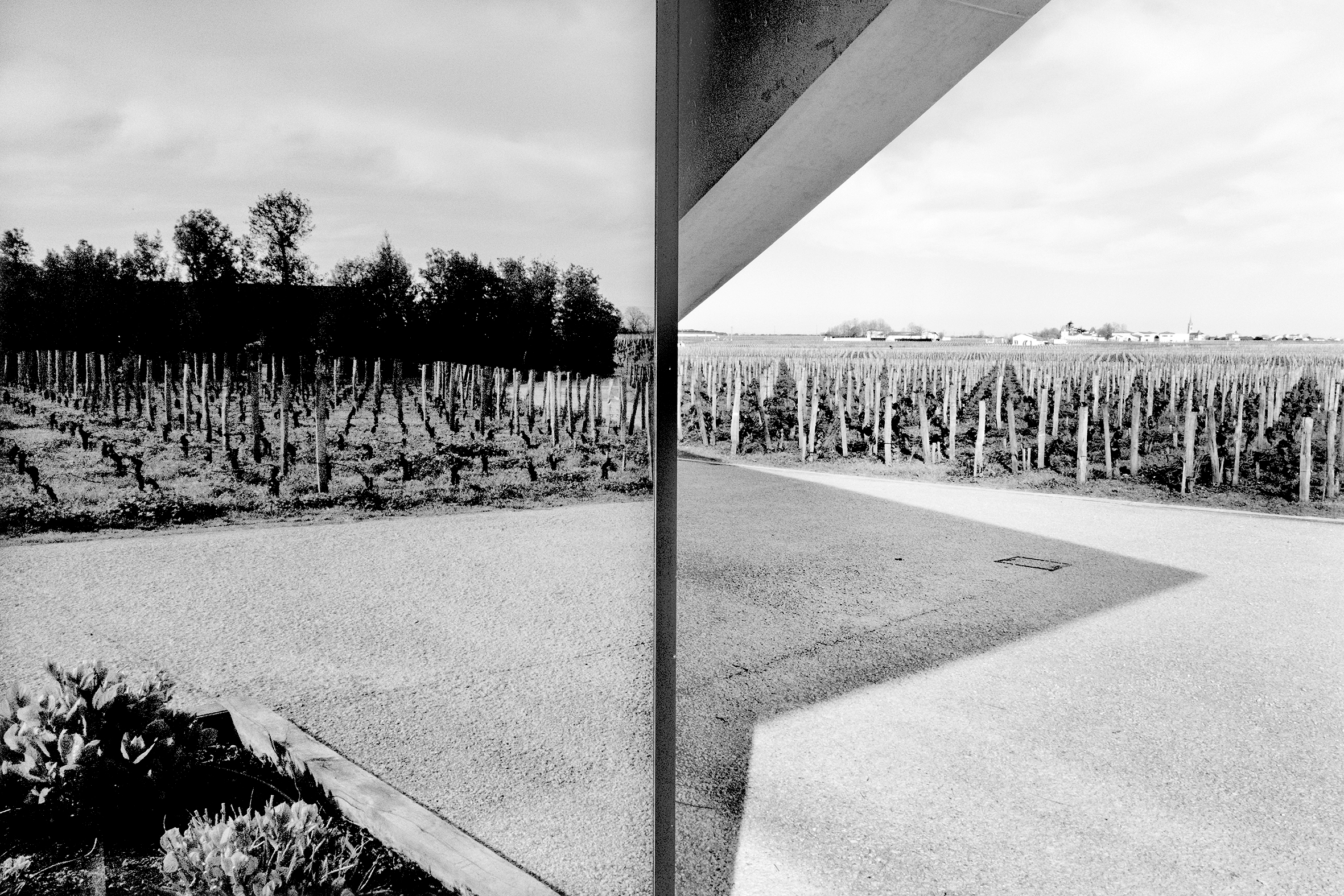
In the 1980s, Pierre Lurton worked at Château Clos Fourtet, which was then owned by his family. (The Lurtons traded their shares in Château Margaux with the Ginestet family for Clos Fourtet in the 1940s.) After working for his family for the better part of a decade, Pierre applied for the management position at Cheval Blanc.
By Bordeaux standards, Cheval Blanc is a young château.
For most of its brief history, it had only ever been owned by one family, the Fourcaud-Laussacs, who were the decedents of Jean-Jacques Ducasse. Ducasse purchased the core parcels for Cheval Blanc in 1832 and then spent the next two decades acquiring neighboring blocks from Château Figeac, eventually forming the 39-hectare vineyard that is pretty much as it is today. In 1852, the name “Cheval Blanc” was established. Then, from 1860 to 1871, the estate was replanted to the uncommon mix of 50% Merlot and 50% Cabernet Franc, an inspired decision that would prove ideal for the unusual matrix of soil compositions based around clay, gravel, and sand. This turned out to be a magic combination of soils and varieties that would define the estate’s singular, cerebral style to this day.
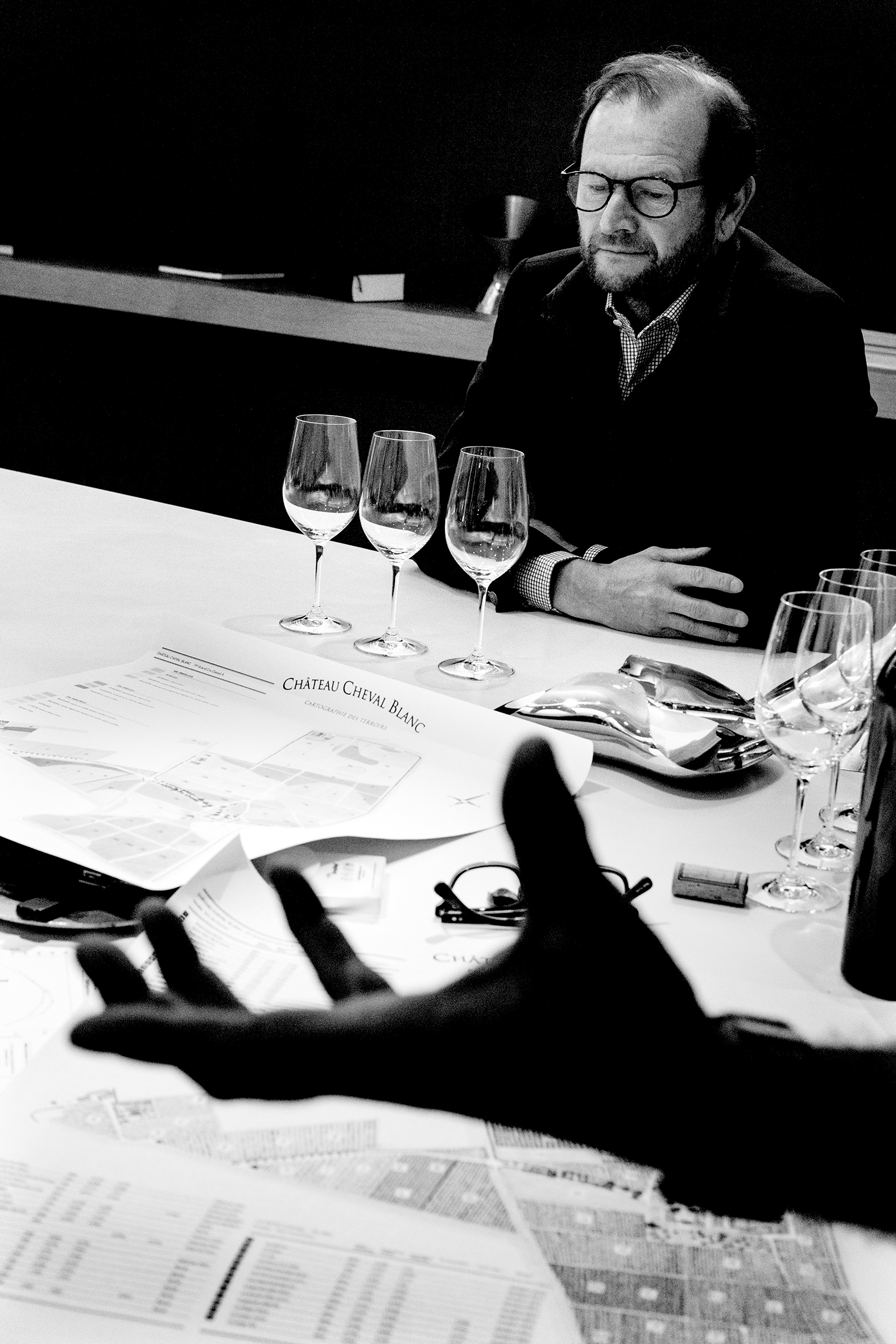
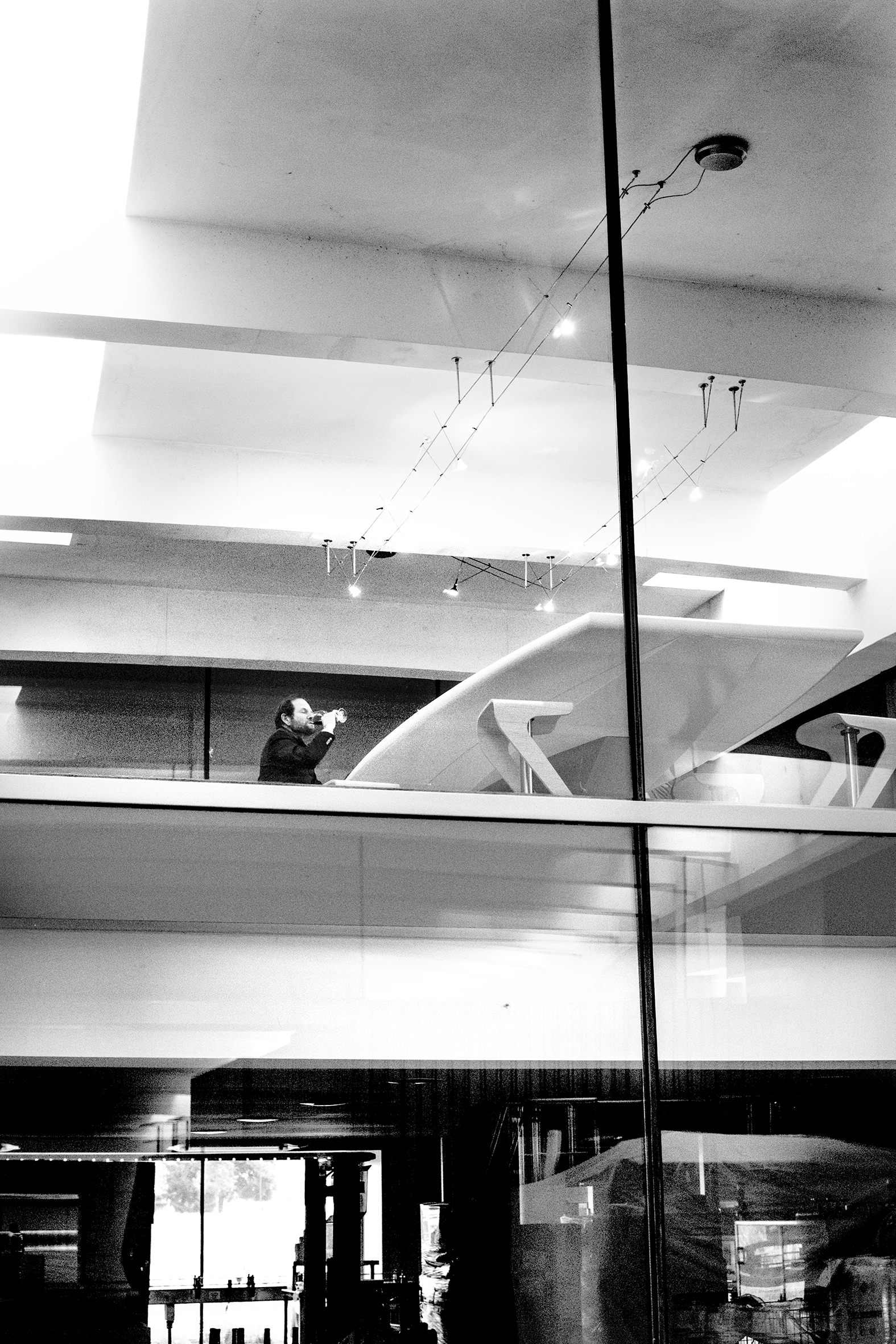
Family member (by marriage) Jacques Hébrard was the manager of Cheval Blanc from 1970 to 1989. Hébrard became infamous in the mid-1980s after an incident involving a new American wine critic—Robert Parker. I’ve heard Parker tell the story many times. Hébrard was outraged with Parker’s review of the 1981 Cheval Blanc from barrel. Parker agreed to revisit the property and taste the wine from bottle. When he arrived, no one appeared to be at the château. Next thing he knew, a vicious little dog came out of nowhere and took a hunk out of his leg. Hébrart eventually emerged, ignored the blood pouring from Parker’s leg, and gave him an earful and a copy of his newsletter with the offending review. Parker tasted the wine again. Finding it much better than he had initially judged it, he upgraded his assessment. In the 1985 printing of Parker’s “Bordeaux” book, the revised 1981 Cheval Blanc tasting note with the following piece of commentary at the end can be found, which was never transcribed to the website nor future editions:
“I paid the price for my unkind, unfortunately incorrect, assessment of this wine on my last visit to Cheval Blanc. I was bitten by the château’s nasty little dog, and verbally blasted by the owner, Monsieur Hébrard. C’est la vie!”
Parker claims to have a scar on his leg where the dog bit him. Nonetheless, Hébrard’s 1982 Cheval Blanc would receive 98 points when first tasted from bottle, only to be upgraded to 100 points a few years later. Reviewed for this report, it remains a legendary wine.
After Jacques Hébrard retired in 1989, Pierre Lurton was hired to manage Cheval Blanc in 1991. It was suggested by the long-standing owners that he change his name. After all, the Lurton name was associated with rival Clos Fourtet, not to mention dozens of other châteaux around the region. A man with his name in this position might cause confusion.
"What about your mother’s maiden name?" It was suggested. "Can you use this instead?"
"It’s possible," Pierre replied. "But you may not like that one either."
"Why?"
"It’s Lafitte."
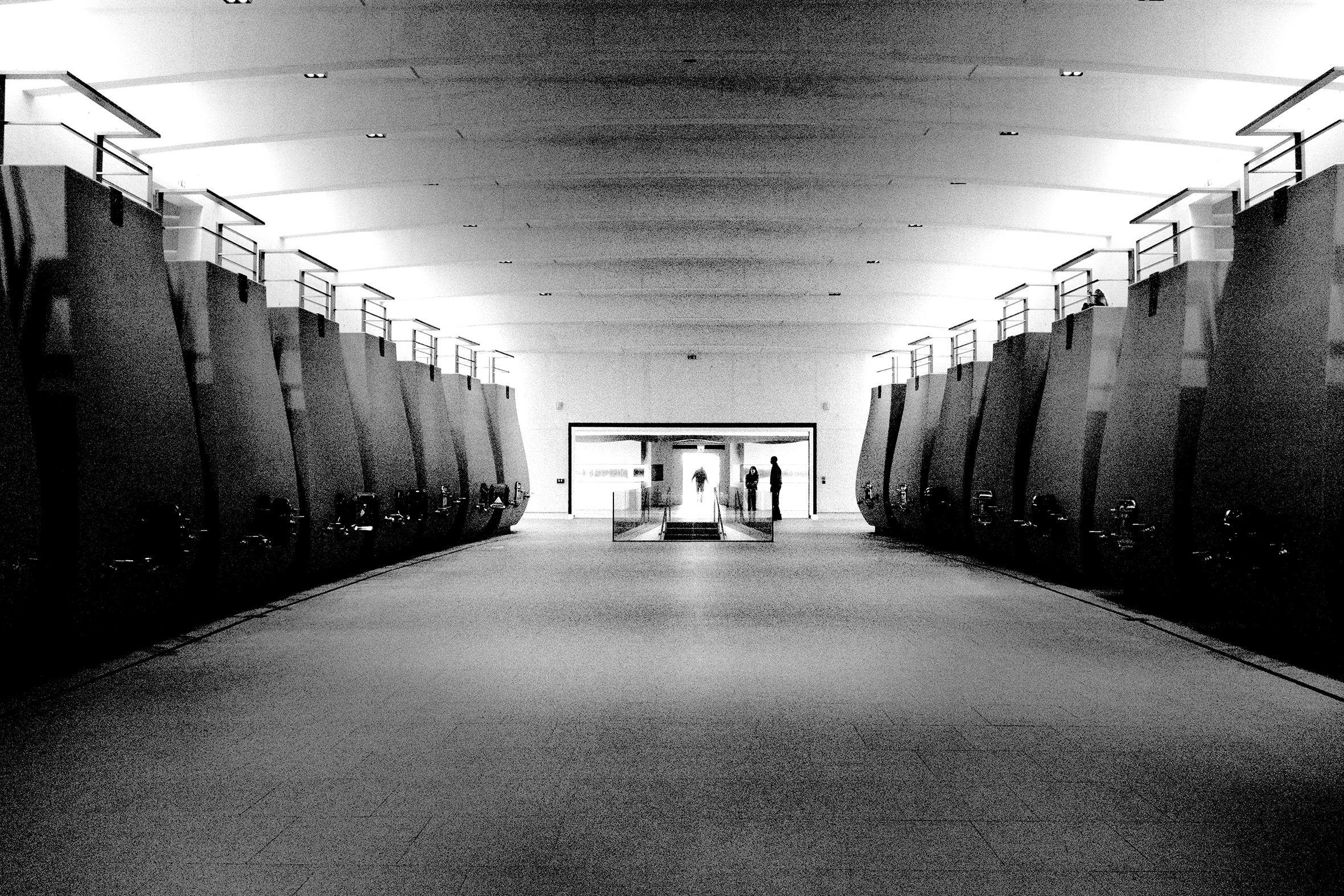
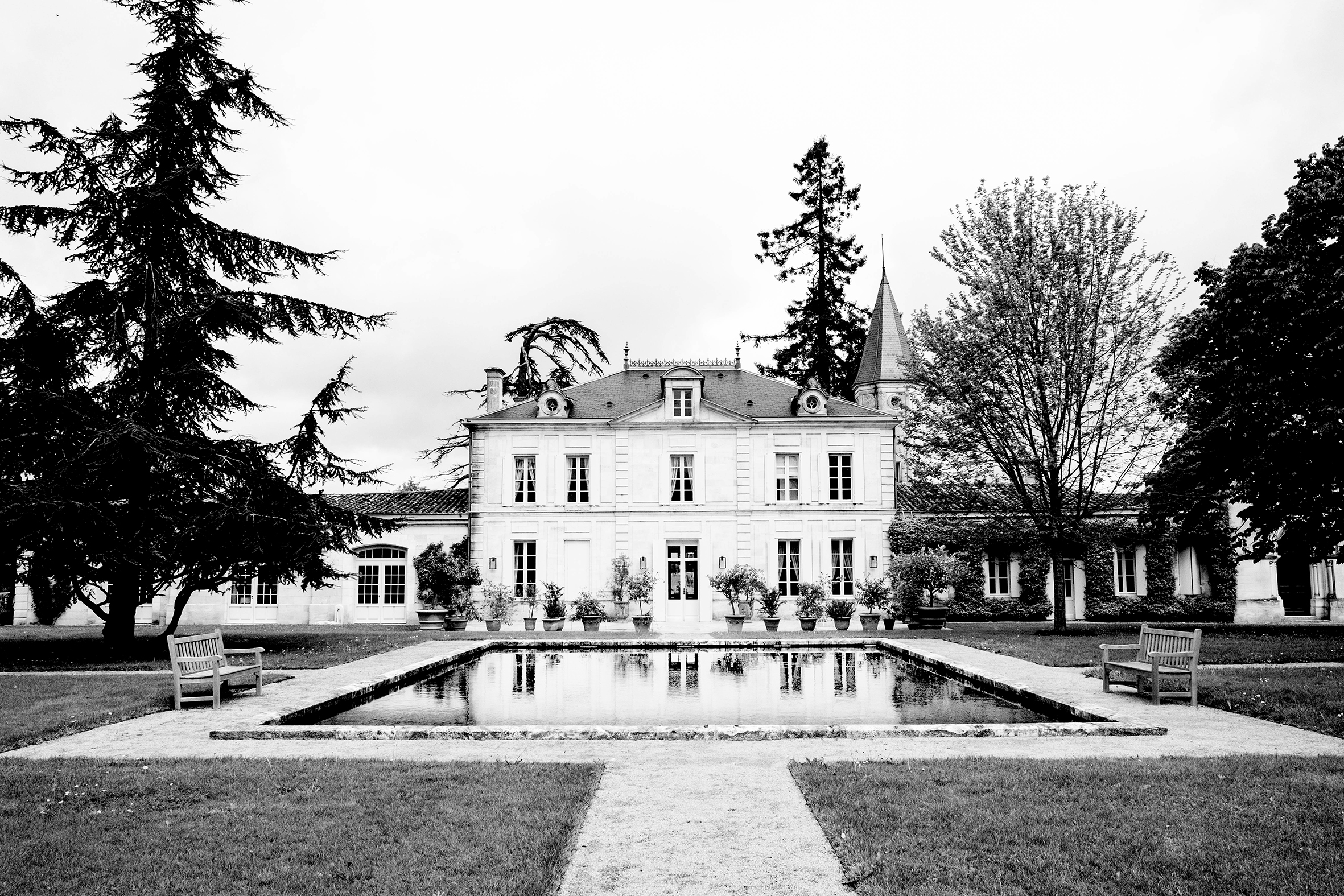
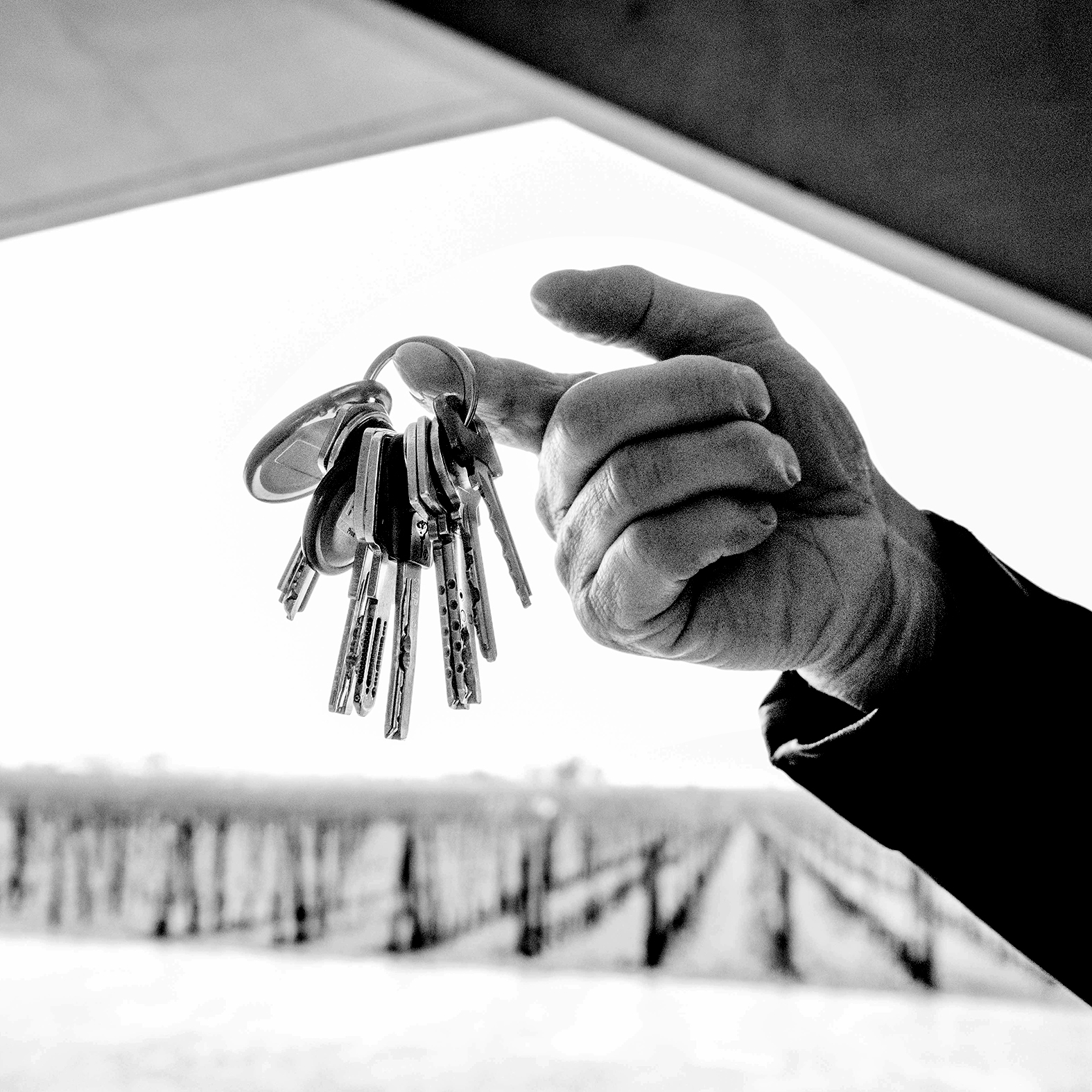
1991 was a tough vintage to make a first impression.
It was the year of one of the worst frosts in this region in recorded history. The frost struck on April 20th/21st, with temperatures dipping to nearly minus 10 degrees Celsius in some areas. Saint-Émilion was one of the hardest hit areas. The 1991 crop for low-lying Cheval Blanc was decimated.
“There was nothing for me to do that first year,” recalls Pierre. “There were almost no grapes; what could I do?”
Yields in 1991 were just 7 hectoliters per hectare. No grand vin was made, and everything was declassified into the second wine, Petit Cheval.
After that dismal start, the only way was up, but considering 1991 was followed by ’92, ’93, and ’94, it was a slow upward climb for Pierre. Yet when Albert Frère and Bernard Arnault bought the château in 1998, Pierre held onto his position, and resources became available to take the estate to its full potential even in difficult vintages.
Wines such as the decadent 1947 and beguilingly complex 1982 vintages demonstrate the potential of Cheval Blanc’s vineyard. What the estate lacked was the resources to produce high caliber wines in challenging vintages. Following the Arnault/Frère acquisition, a number of significant improvements were made with impressive results.
In 2008, Pierre-Olivier Clouet was appointed technical director of the estate, having been recruited by Pierre Lurton as an intern in 2004. His continuing contribution to the Cheval Blanc cannot be overstated. One of his first major projects was overseeing the construction of the new cellar, completed in 2011. The state-of-the-art facility allows smaller batch fermentations and, therefore, more precision when it comes to the winemaking, the blends, and the cuts. The vat room now contains fifty-two vats available in nine different sizes (20 hl to 110 hl), designed to correspond to the harvest from each plot, which is vinified separately. And the 39-hectare vineyard has been subdivided and is farmed as 45 different plots based on grape variety, age of vines, and soil type.
But the most striking results in recent years come from the ruthless selection process
Painstaking decisions are made about what goes into the grand vin, the second wine, or neither. None of the 45 plots are guaranteed for inclusion into the grand vin, and, as in the case of 2015 and 2022 vintages, there is no guarantee that a second wine will even be made. In these cases, that which did not make the grand vin cut was declassified and sold for bulk.
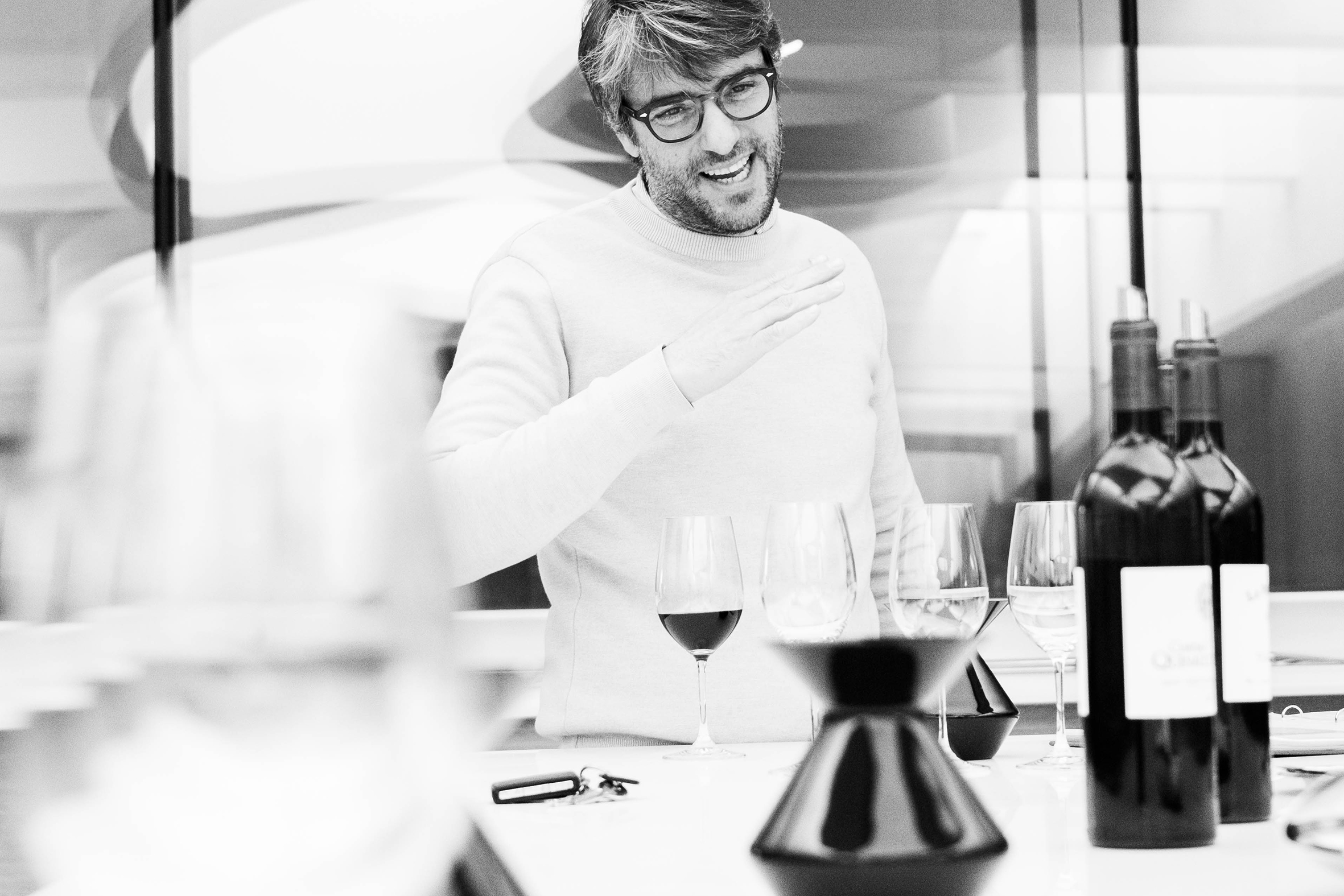
The result of these changes is greater consistency of quality in the wines produced in the last decade. Even in challenging vintages such as 2011, 2013, and 2017—another year when the vineyard was hit by severe frost—Cheval Blanc has produced outstanding wines, faithfully delivering alluring fragrance and plushness, not needing power and punch to impress.
More recently, there has been a shake-up in the grape varieties.
A little Cabernet Sauvignon has been planted to a small, gravel-rich parcel on the estate, constituting 5% of the vineyard area.
“From 2016, we have a little Cabernet Sauvignon in the blend as we did historically, but it disappeared when the plots were replanted,” Pierre-Olivier told me during a tasting of this wine. “We replanted 1.4 hectares in 2014 and will start using it in the blends, looking to achieve about 5% eventually.”
And in 2016, the first vintage of Cheval Blanc’s new white wine was released.
“Albert Frère thought it would be interesting to produce a white wine at Cheval Blanc,” said Pierre Lurton. “So, we purchased a 3.5-hectare section of La Tour du Pin Figeac in 2006 and planted this to Sauvignon Blanc.”
Coming from the acquired parcel just across the road from Cheval Blanc, the first commercially available vintage of the new “Le Petit Cheval Blanc” label was the 2014.
In 2021, Château Cheval Blanc announced it would withdraw from the jostling crowd of the Saint-Émilion Classification, giving up its envied "1er Grand Cru Classé ‘A’"position.
The estate stated that the new criteria for the upcoming 2022 classification focused too much on marketing, product placement, wine tourism, and how often the name appears in media. With the new classification, they felt too little importance would be placed on viticulture and terroir.
“This terroir is unique,” Pierre Lurton pointed out at our TWI Summit Cheval Blanc Dinner in Dallas, Texas, in June this year. “The river that once ran through here left gravel, which is shared with neighboring Figeac. We share the clay of Petrus. And we share some of the sand of La Dominique. Then there is the uniqueness of the grape varieties: 55% Cabernet Franc, 40% Merlot, and 5% Cabernet Sauvignon. Cashmere is the real definition of this wine.”
That exceedingly soft cashmere cardigan texture is indeed a defining feature, matching Cheval Blanc’s playful restraint and whispering perfume. Always an impeccably crafted, cerebral wine, it’s no Superman, and that’s by plan.
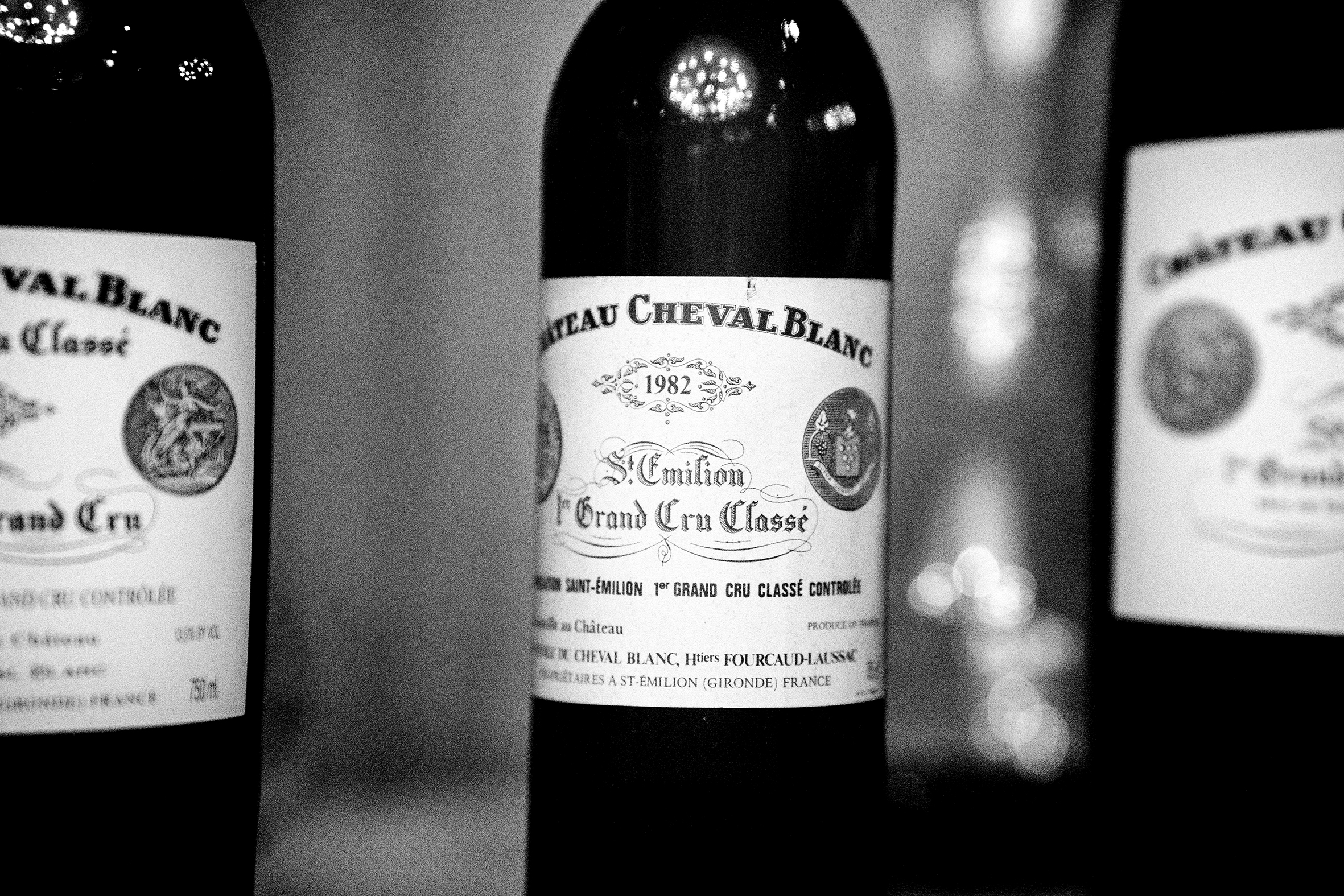
Article & Reviews by Lisa Perrotti-Brown MW
Photos by Johan Berglund
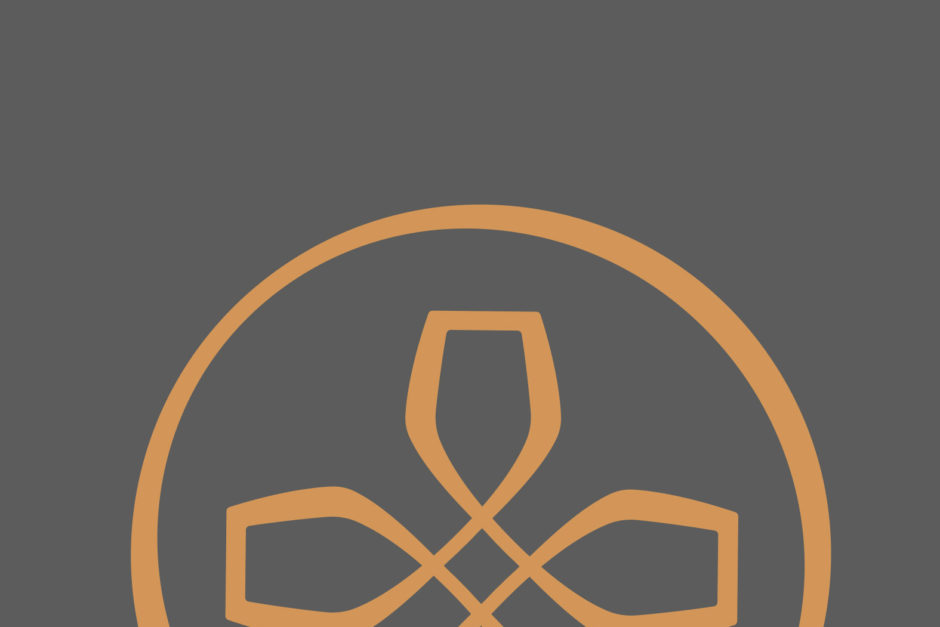
PRODUCERS IN THIS ARTICLE
> Show all wines sorted by scoreMore articles
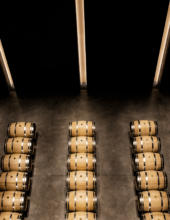
Bordeaux 2023 Vintage Report and Reviews from Barrel
09th May 2024
649 tasting notes
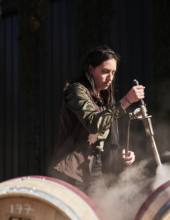
Cathiard Vineyard New Releases
02nd May 2024
3 tasting notes
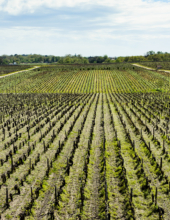
Bordeaux 2023 Preliminary Vintage Report and Reviews from Barrel
29th Apr 2024
56 tasting notes
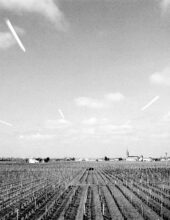
2021 Bordeaux in Bottle and A Modest Proposal
24th Apr 2024
599 tasting notes
Show all articles